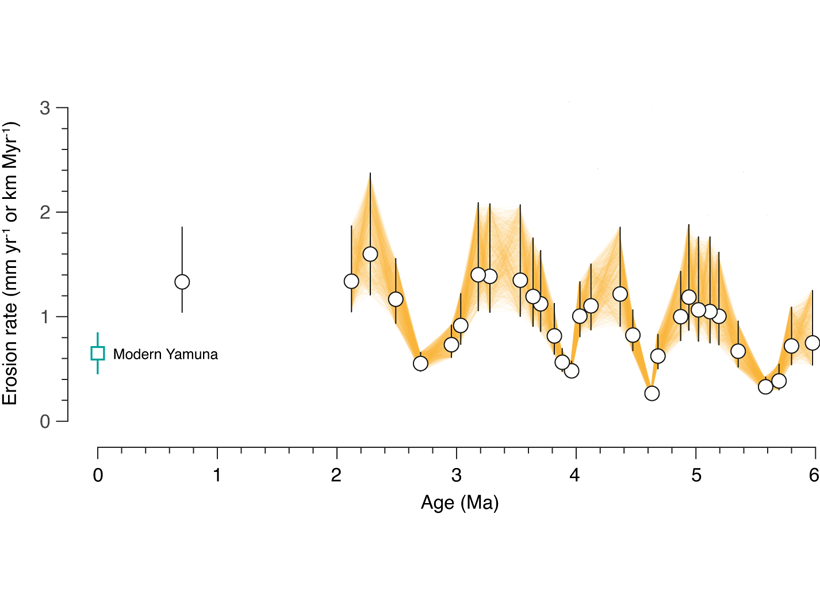Source: AGU Advances
It is now widely accepted that both climate and tectonics interact to play a role in shaping mountain landscapes, but beyond that, uncertainty remains as to the degree to which each plays a role, and how. Mandal et al. [2021] report erosion rates based on cosmogenic 10Be measurements made on Siwalik Group sediments shed from Himalaya. As pointed out in an accompanying Viewpoint by Codilean and Sadler [2021], determining accurate erosion rates in this way is difficult, but the dataset raises interesting questions about the roles of tectonics and climate in active settings. Mandal et al. go on to propose that the ~1-Myr cyclicity evident in their dataset results not from a climate driver, but from an emergent phenomenon related to tectonic accretion of material to the Himalaya. This proposal will generate debate and stimulate more study of how specific sets of processes impact the coupled tectonic/climate system.
Citation: Mandal, S. K., Scherier, D. & Wittmann, H. [2021]. Tectonic accretion controls erosional cyclicity in the Himalaya. AGU Advances, 2, e2021AV000487. https://doi.org/10.1029/2021AV000487
—Peter Zeitler, Editor, AGU Advances
Text © 2021. The authors. CC BY-NC-ND 3.0
Except where otherwise noted, images are subject to copyright. Any reuse without express permission from the copyright owner is prohibited.

